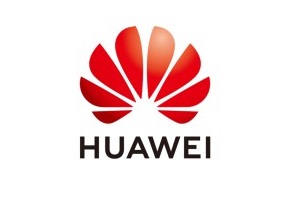Huawei announces royalty rates for its patent license programmes

Huawei, announced royalty rates for its handsets, Wi-Fi, and IoT patent license programmes. Huawei has entered into patent licenses with both tech industry players such as Samsung and Oppo, and automakers including Mercedes-Benz, Audi, BMW, Porsche, Subaru, Renault, Lamborghini, and Bentley.
“Huawei is willing to share cutting-edge innovations in the form of patents with the world,” says the Huawei’s chief legal officer, Song Liuping. “These will support the common, sustainable development of industries globally,” adds Liuping.
Song Liuping remarks were made at Huawei’s annual event on innovation and intellectual property protection in Shenzhen, which this year was titled “Bridging Horizons of Innovations: Sharing IP, Driving Innovation”.
The event featured sharing sessions by experts from diverse areas, covering technologies applicable at home, on the go, and at work. These include research on 5.5G, audio and video technologies, ten-size adjustable aperture in mobile phones, a general obstacle detection network that helps cars identify abnormal objects outside the white list of general obstacles, and algorithms that can enable intelligent production scheduling and optimisation.
Huawei is committed to licensing its standard essential patents (SEPs) on fair, reasonable, and non-discriminatory (FRAND) principles. The event also saw Huawei announcing royalty rates for 4G and 5G handsets, Wi-Fi 6 devices, and Internet of Things (IoT) products, all areas where Huawei is a SEP owner.
The rate caps for 4G and 5G handsets are [$1.5 per unit (€1.34 per unit)] and [$2.5 per unit (€2.23 per unit)], respectively. Huawei’s royalty rate for Wi-Fi 6 consumer devices, meanwhile, is [$0.5 per unit (€0.45 per unit)]. For IoT, the rate for IoT-Centric devices is 1% of the net selling price, capped at [$0.75 (€0.67)], while the rate for IoT-Enhanced devices ranges from [$0.3 (€0.27)] to [$1 per unit (€0.89 per unit)].
Alan Fan, vice president and head of the intellectual property rights department at Huawei, iterated that a positive cycle where innovators are protected, rewarded, and encouraged is key to sustainable innovation.
“Huawei takes a balanced approach to patent licensing. We believe reasonable royalty rates will incentivise both the creation and adoption of innovations.” Fan adds.
To date, Huawei has entered into almost 200 bi-lateral patent licenses, according to Fan. In addition, over 350 companies have obtained licenses to Huawei’s patents through patent pools. Under these licenses, Huawei’s total past royalty payment is about three times its total royalty collection, and its 2022 licensing revenue amounted to [$560 million (€498.88 million)].
While addressing the event remotely, Tomas Lamanauskas, deputy secretary-general of the International Telecommunication Union, says “Huawei has been a key player in the collaborative process of supporting cost-effective, inclusive innovation of scale.”
“As we continue to tackle global challenges and work towards rescuing the Sustainable Development Goals (SDGs), conducive policies and frameworks are essential to help innovations ecosystems flourish.” Lamanauskas adds.
The company’s cumulative R&D investment over the past ten years totaled [CNY977.3 billion (EUR121.43 billion)]. In 2022, its R&D expenditure stood at [CNY161.5 billion (EUR7.64 billion)], or 25.1% of its revenue. The 2022 EU Industrial R&D Investment Scoreboard put Huawei No. 4 worldwide.
Huawei is also an active advocate and supporter of major global open source industry organisations, according to Fan.
Huawei’s official licensing website was also launched at the event. This website offers details about the company’s bilateral licensing programmes ranging from mobile handsets to Wi-Fi and cellular IoT.
“Intellectual property is the great engine of cooperation in technology. It advances technology for everyone to enjoy.” says Randall R. Rader, former chief judge of the United States Court of Appeals for the Federal Circuit.
To learn more about Huawei’s licensing programmes and rates, visit Huawei.
Comment on this article below or via Twitter @IoTGN
